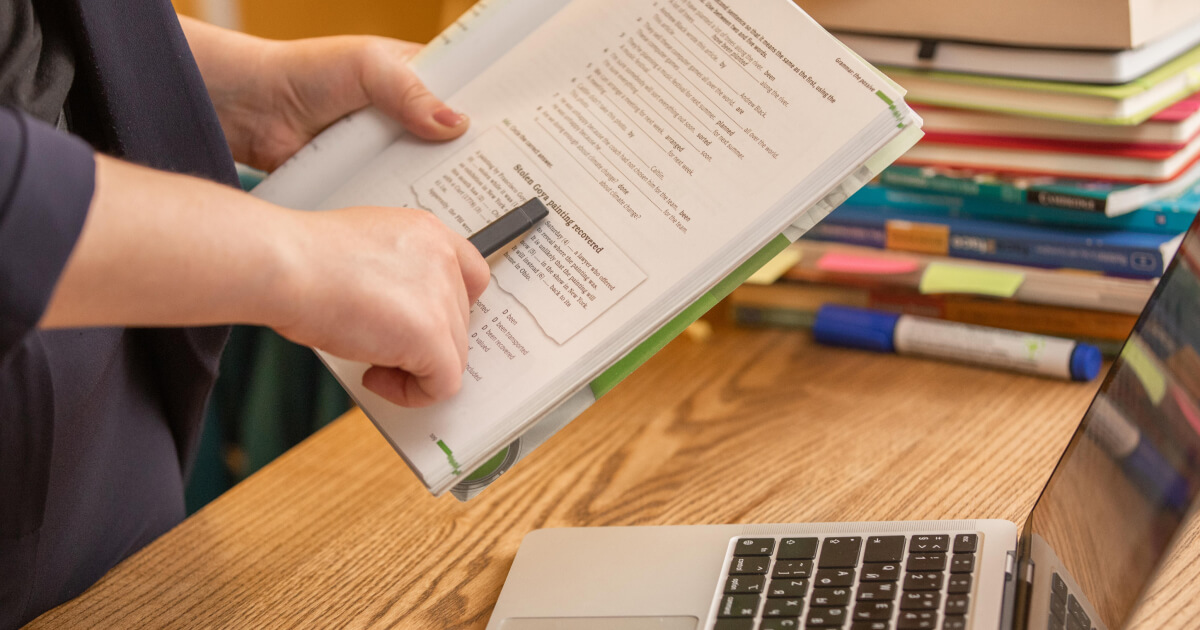What is a teacher’s certificate?
- Teaching qualifications
- Tips & Strategies
- Methodology

24.11.2023
Our History series moves on. Through our previous discussions on the method, we have gradually reached the audio-lingual method.
This article would be interesting for those wondering what the audio-lingual method is, how it appeared, and how effective it is nowadays.
We are going to give answers to all of these questions and even more!
The Grammar-Translation Method
The audio-lingual method is another teaching approach that has been initially focused on speaking proficiency.
An urgent need to review and restructure the learning process can be explained historically.
The start of World War II made it more crucial than ever for Americans to learn the languages of both their enemies and friends.
Consequently, fragments of the Direct Method were taken to create and reinforce this new approach, the “Army Method,” which eventually became known as the Audiolingual Method in the 1950s.
The main focus of the method was to shape the habit of using certain structures, patterns and verbs through repetition and drilling, and general extensive exposure to the examples that needed to be recreated.
Developing the habit was supposed to help students improve their speaking skills and work with language acquisition on the physiological level.

The key principles of the audio-lingual method were the following:
Learn more about the Direct Method
As for the students’ position in such a classroom, it can be described with the help of the following key requirements:

The audio-lingual method was initially created as the improved version of the direct method. It was supposed to pay much more attention to speaking and embrace the natural process of language acquisition.
After 1964, its appeal declined, in part due to exposure of its flaws.
Since it downplayed the importance of context and prior knowledge in language learning and placed an excessive amount of emphasis on memorization and practice, it was unable to foster communicative competence a lot.
After all, it was found that mistakes were not always so harmful and even wanted, as the teacher knows where more attention should be paid.
Plus, it was proved that language can’t really be learned by developing a habit in the way the audio-lingual method puts it.
Wonder how to increase your students' progress?
| Pros | Cons |
| Constant drills make students remember the materials for a very long time. | Students overlearn the information but can’t really use it fluently outside of the memorized patterns. |
| Students have very good pronunciation as it is taught straight from the beginning. | Not enough attention is paid to the skills that are not oral. Therefore, writing suffers a lot. Too little grammar and spelling exposure leads to a lot of writing mistakes. |
| Students also get a lot of context about the culture of the language they are learning through exposure to dialogues and texts. | Students don’t get an explicit presentation of grammar, which is needed sometimes. Thus, some grammar rules may stay vague. |
| Almost no L1 is allowed so students are focused on the foreign language all the time. | Errors are not allowed, and the students are pressured to reproduce the examples given by the teacher with no mistakes. |

Understand teaching IELTS reading
Join our practical courseDialogues are considered the best examples to copy within the method as they have both useful structures and comprehensible context.
That is why dialogues are not only role-played but also learnt by heart.
Drillings are a must in the audio-lingual method.
Therefore, the whole spectrum is actively used: repetition and chain drill, substitution and transformation drill. You name it!
There is no better way to reproduce certain words within the context than fill-in-the-gaps tasks.
They require understanding of the target language, knowledge of whether the word is appropriate in a certain structure, an ability to interact with a context, as well as the right spelling skills.

Even though the audio-lingual method has lost its impact over the years, teachers still use some elements of this method while teaching, especially when it comes to practicing pronunciation or drilling.
Make sure you keep up with the latest trends and the best teaching techniques with Grade University.
Audio-lingual methods are very effective nowadays. Is it true?
Drilling is an important part of teaching, according to the method. Can you relate?
Arina Kravchenko
Author
Teacher of General English & IELTS
Comments
Leave your comment